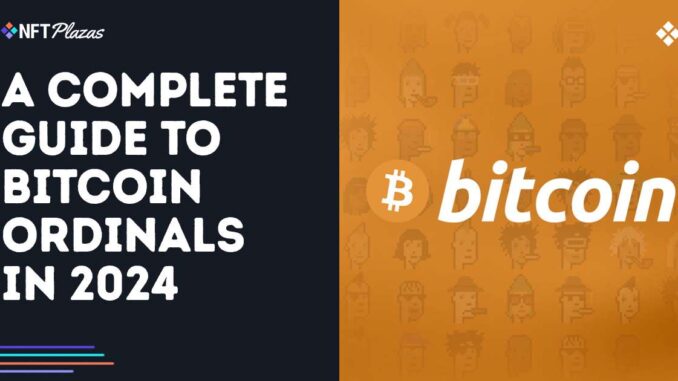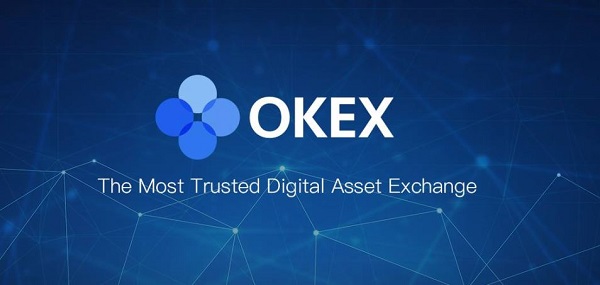
For over a decade, Bitcoin was purely a digital currency – but today, it’s broadening its horizons more than ever before.
Since 2023, Non-Fungible Tokens (NFTs) have made their way to Bitcoin network – known as Bitcoin Ordinals – which has opened a new frontier for digital art, collectibles, and blockchain culture.
Bitcoin Ordinals are pieces of unique data that are embedded directly onto individual satoshis, the smallest units of Bitcoin, changing them into distinct digital artefacts. What makes Bitcoin NFTs unique, how do they work, and why should you explore them?
Here’s our complete guide to Bitcoin Ordinals in 2024.
What are Bitcoin Ordinals?
Bitcoin Ordinals were introduced in January 2023 by Casey Rodarmor, a noted Bitcoin developer. He utilised new features in Bitcoin’s November 2021 Taproot upgrade – a smart contract enhancement – to allow for data to be inscribed on individual satoshis, without affecting the core Bitcoin network, in an effort to create a more fair, equitable and authentic blockchain art ecosystem.
The rise of Ordinals led to the creation of the BRC-20 standard – a Bitcoin asset standard equivalent to ERC-20 for NFTs on Ethereum – followed by Runes, a more efficient standard for art on Bitcoin. This led to existing NFT powerhouses experimenting with bridges to, or new collections on, Bitcoin – including BTC DeGods, and Yuga Labs’ TwelveFold.
After a brief period where Bitcoin Ordinals trading was tracked via a public Google Sheets document, a fast-growing number of wallets, exchanges and platforms began to support Bitcoin Ordinals. Some of the most popular Bitcoin Ordinals wallets include Xverse, Leather, and OKX Wallet – whilst the biggest Ordinals marketplaces include Magic Eden, OKX, and Gamma.
Since then, Bitcoin Ordinals has continued to grow in prominence. Stacks emerged as a dedicated “Layer-2 style” network for Bitcoin – building its own NFT ecosystem within the Bitcoin fold. Further improvements are on the way to improve the smart contract capabilities of Bitcoin Ordinals too, as although its popularity continues to grow, Ordinals are still regarded as a niche segment of the wider NFT industry.

How do Bitcoin Ordinals work?
Bitcoin Ordinals work slightly differently than NFTs on Ethereum.
On Ethereum, data about an asset is added to a smart contract on the network – with the art itself typically stored on a decentralised IPFS service such as Pinata or Infura. On Bitcoin, the data is inscribed on to individual satoshis on the Bitcoin network, making Ordinals fully on-chain.
As every satoshi on Bitcoin was mined sequentially, there’s a limit to the maximum number of Ordinals that there can be: roughly 2.1 trillion – and as each individual satoshi exists as normal on Bitcoin, they can be bought, sold and traded in a similar way to NFTs on Ethereum.
On top of these differences, Ordinals also have a built-in rarity layer that Ethereum-based NFTs do not have. Particular satoshis – regardless of any data inscribed onto them – are more desirable than others, such as the first satoshi of a new block, a new epoch, or a new cycle. Rodarmor created the Rodarmor Rarity Index to categorize all satoshis into 6 different rarities from Common to Mythic, adding another perceived layer of value to Ordinals.
Ordinals have been met with a mixed reaction from the Bitcoin community. Critics argue that Ordinals muddy the waters for Bitcoin, weakening its stance as a leading digital currency and leading to increased network congestion and higher fees. Supporters argue that Ordinals expand Bitcoin’s existing capabilities, and open new avenues for both Bitcoin and digital art to succeed.
Regardless of these debates, Ordinals have gained steady traction – and look set to continue to do so.

The History of Bitcoin Ordinals
Ordinals are not the first attempt to add additional functionality to Bitcoin.
Counterparty, which debuted in 2014, tried a more rudimentary approach, but faced limitations with scalability, storage capacity and scripting that led to it falling out of favour.
Bitcoin’s Taproot update in November 2021 opened the path for a more effective solution – and in January 2023, Casey Rodarmor introduced the Ordinals protocol on Bitcoin.
March 2023 saw the introduction of BRC-20 tokens, with $ORDI emerging as the first fungible token on Bitcoin – surpassing $1 billion USD just a month later. This success was met with a surge of new Ordinals projects, such as Taproot Wizards, Ordinal Punks and Bitcoin Frogs – which spurned leading NFT marketplaces like Magic Eden and OKX to add Ordinals support.
By the end of 2023, over 10 million Ordinals had been inscribed – and that number has only continued to grow across 2024, with more dedicated tools, platforms and enthusiasts than ever before.

What is the future of Bitcoin Ordinals?
Bitcoin Ordinals are focusing on several key areas for the future.
Improving the Ordinals protocol directly to address ongoing scalability issues will be key – including the further development of the Stacks L2 ecosystem. Various paths for further innovation are still open, such as DeFi, tokenized securities, digital art advancement and more – and with the ever-changing regulatory environment (particularly in the U.S.), Ordinals could be a key gateway for user adoption moving forwards.
The popularity of Bitcoin Ordinals is a indication of how the Bitcoin ecosystem can adapt in light of ongoing trends or consumer habits – and as they continue to develop, Ordinals offer exciting opportunities for artists, collectors, and investors alike.
Whether you’re pro-Ordinals or anti-Ordinals, their impact only looks set to grow as time goes on.





Be the first to comment